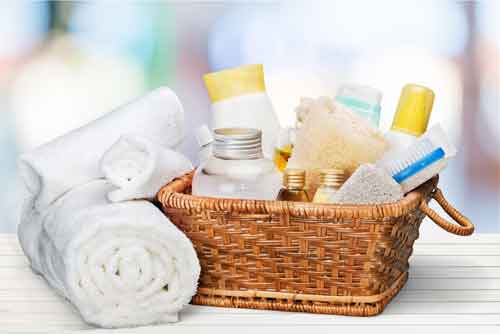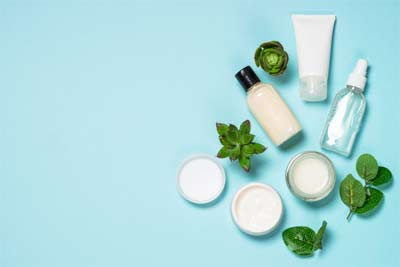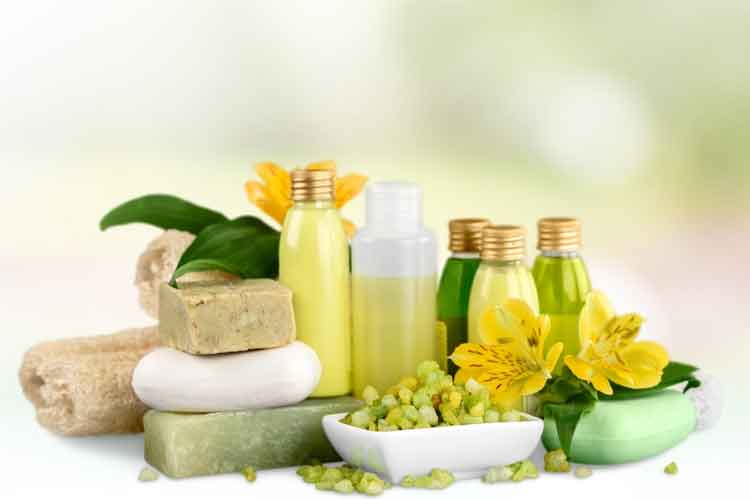Is your skin irritated by beauty products? Do you think you have sensitive skin? What about your children using personal care products?
You may be interested to know that of the thousands of personal care products on the market, only 11% of them have been tested for safety. This includes all kinds of products, from lotions and soaps to baby care and personal hygiene products. What is worse, many of the chemicals and ingredients these products contain are actually carcinogens or otherwise directly toxic to humans! Curiously, the FDA does not have authority over what the manufacturing companies use in personal care products. And more curiously, most of these toxins have been banned in Europe, but not in Canada or the US. Only recently did the FDA decide to begin enforcing a truth-in-labeling law from 1975 which requires labels to provide information about ingredients that have not been safety tested. 99% of cosmetics and toiletries products in the US market contain untested ingredients, but labels still do not give consumers this information.

Scientists have identified many toxic and carcinogenic substances that are routinely used by people every day through personal care products. Every chemical that comes in contact with your skin is absorbed to some degree. Every time you use a product that contains untested formulas on your body, you are giving yourself a dose of the chemicals. One of the most heinous chemicals that permeates America today is triclosan. Triclosan is a hormone-disrupting pesticide that was recently FDA approved for use in over 140 products. In a test group of over 2,000 people, it was found in the urine of over 75% of them. Triclosan is a chemical that bioaccumulates and is stored in fatty tissue. It causes liver disease. It can end up in breast milk and can cause fetal and childhood development problems. Triclosan is used as a microbial agent in sanitizing products which include hand soaps, hand sanitizers, baby bibs and dozens of other baby products, toothpaste (Colgate, see , undergarments and other clothing, toys, and even countertops and credit cards. It remains in the environment, in streams and rivers, breaking down into chemicals that are toxic to wildlife as well as humans. The risk factors associated with its use are poorly understood or not researched. Read more about triclosan here, including some disturbing lab test results that were omitted from EPA approval documents in 2008.
Phthalates are a large group of toxic chemicals that are used in a host of common products such as hair spray, deodorants, nail polish, perfumes and all sorts of scented items. They are used as solvents and plasticizers in cosmetics and other products. (If you’ve ever thought how “plastic” makeup sometimes looks, you were exactly right.) Black and brown hair dyes contain carcinogens. Cosmetic grade talc (that sounds pure, doesn’t it?) is a carcinogen. Talc has been removed from some products such as baby powders after public outcry, but it still is used in others. Labels will often have a long list of chemicals that are preservatives, and many of them are not stable and will break down into formaldehyde, which is a carcinogen. Some foaming additives and detergent compounds in soaps, shampoos, and cleansers are also carcinogenic. Even lanolin, which is a natural ingredient pressed from sheep’s wool, may contain pesticides and many agricultural chemicals. DDT, which was banned in 1972, sometimes appears in lanolin, so even a natural substance can be contaminated with toxins.

Consumer groups try to keep pressure on lawmakers to clean up this mess. One organization, Campaign for Safe Cosmetics, urges consumers to take a pro-active approach and carefully scrutinize products before buying them. Just because the mainstream products are unregulated doesn’t mean that safe alternatives aren’t out there. Check the Skin Deep Cosmetic Database to learn here. One of the best ways to find safe alternatives is to search online for companies that make their safe ingredients and wholesome manufacturing practices a priority. Usually these companies proudly display their commitment to product safety in a prominent place on their websites, making it easier for consumers to make comparisons.
